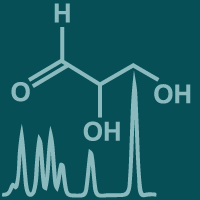Topic Menu
► Topic MenuTopic Editors




Oxidative Stress and Mitochondrial Dysfunction in Metabolic and Inflammatory Diseases
Topic Information
Dear Colleagues,
Background Intracellular oxidative stress is induced by the overexpression of reactive oxygen species (ROS) and/or decreased antioxidants defense activity, causing deleterious chemical changes in biomolecules, such as lipids, DNA/RNA, and proteins. ROS are the highly reactive, oxygen-containing, radical or molecular species that include superoxide anion/radical (O2•‒), hydrogen peroxide (H2O2), and hydroxyl radical (HO•). Chemically, ROS are generated from molecular oxygen (O2) during the successive four steps of one electron reduction in mitochondrial respiratory chain. Free radicals (O2•‒/HO•) can further react with organic substrates to form intermediate species and yield the secondary ROS, such as peroxyl radical (RO2•) and hydroperoxide (ROOH). H2O2, which is a relatively less toxic but more stable molecular species, becomes highly toxic after further interaction with Fe++ (Fenton reaction) or in presence of O2•‒ (Haber-Weiss reaction). Scope and information for Authors Obesity triggers the risk of metabolic syndromes including hypertension, type 2 diabetes and related morbidities, such as hypertension, atherosclerosis, NAFLD/NASH, stroke, cardiovascular disease, aging, neurodegenerative diseases, certain types of cancers, and other chronic inflammatory conditions. Over the past years, significant progress has been made toward developing therapeutic strategies, pharmacological interventions, and mitochondria-targeted approaches that reduce oxidative stress and mitochondrial damage and dysfunction and improve mitochondrial quality in disease setting. The purpose of this Special Issue is to highlight the recent advances and progress on the mechanisms of ROS-mediated oxidative stress and mitochondrial dysfunction, as well as novel therapeutic strategies used in metabolic and inflammatory diseases. We, therefore, we welcome original research, review, mini review, and perspective articles on above-mentioned pathophysiological changes in setting of: obesity; diabetes; hypertension; NAFLD/NASH; stroke; atherosclerosis; cardiovascular disease; aging and age-related neurodegenerative diseases; and other chronic inflammatory conditions. Goal About 90% of the endogenous ROS are generated during oxidative phosphorylation in the mitochondria which are the powerhouses to provide energy to cell in the form of ATP molecules, in order to fuel biochemical reactions and support biological functions. In addition to the ATP synthesis and ROS production/scavenging, mitochondria also regulate intracellular Ca2+, apoptotic cell death, and activation of the caspase family of proteases. ROS accumulation, whether from overproduction or as a sequel to defective antioxidant enzymes may lead to the irreversible damage to mitochondria, which may induce or exacerbate pathologies across a wider spectrum of metabolic and inflammatory diseases. The goal is to enhance our understanding how the ROS play out in physiology and pathophysiology, and how the ROS imbalance may influence the cellular or tissue homeostasis and critical cellular processes, such as aerobic/anaerobic respiration, β-oxidation, fatty acid synthesis, protein translation and post-translational modifications, and other modifications driving the genetic/epigenetic landscape reprogramming in metabolic and inflammatory diseases.
Dr. Sardar Sindhu
Dr. Fahd Al-Mulla
Dr. Rasheed Ahmad
Dr. José Antonio Morales-González
Topic Editors
Keywords
- oxidative stress
- ROS
- mitochondrial dysfunction
- metabolic diseases
- chronic inflammatory diseases
Participating Journals
| Journal Name | Impact Factor | CiteScore | Launched Year | First Decision (median) | APC |
|---|---|---|---|---|---|

Cells
|
5.2 | 10.5 | 2012 | 16 Days | CHF 2700 |

Endocrines
|
- | 2.4 | 2020 | 41.7 Days | CHF 1000 |

Journal of Molecular Pathology
|
1.1 | 2.3 | 2020 | 28.2 Days | CHF 1000 |

Metabolites
|
3.7 | 6.9 | 2011 | 14.4 Days | CHF 2700 |

Stresses
|
- | 6.9 | 2021 | 25.2 Days | CHF 1200 |

Current Issues in Molecular Biology
|
3.0 | 3.7 | 1999 | 17.8 Days | CHF 2200 |

Preprints.org is a multidisciplinary platform offering a preprint service designed to facilitate the early sharing of your research. It supports and empowers your research journey from the very beginning.
MDPI Topics is collaborating with Preprints.org and has established a direct connection between MDPI journals and the platform. Authors are encouraged to take advantage of this opportunity by posting their preprints at Preprints.org prior to publication:
- Share your research immediately: disseminate your ideas prior to publication and establish priority for your work.
- Safeguard your intellectual contribution: Protect your ideas with a time-stamped preprint that serves as proof of your research timeline.
- Boost visibility and impact: Increase the reach and influence of your research by making it accessible to a global audience.
- Gain early feedback: Receive valuable input and insights from peers before submitting to a journal.
- Ensure broad indexing: Web of Science (Preprint Citation Index), Google Scholar, Crossref, SHARE, PrePubMed, Scilit and Europe PMC.

